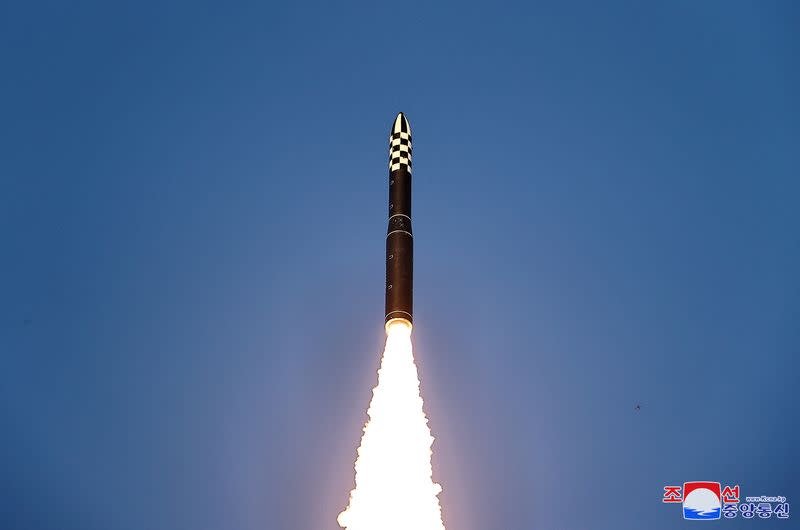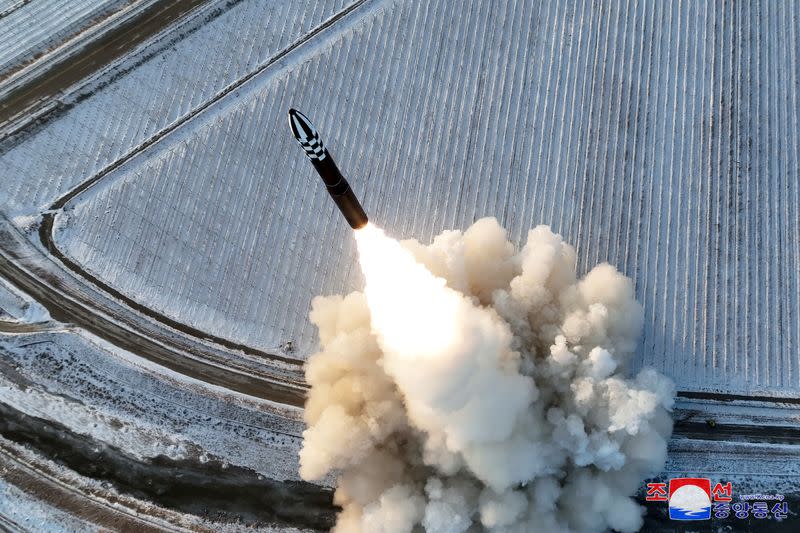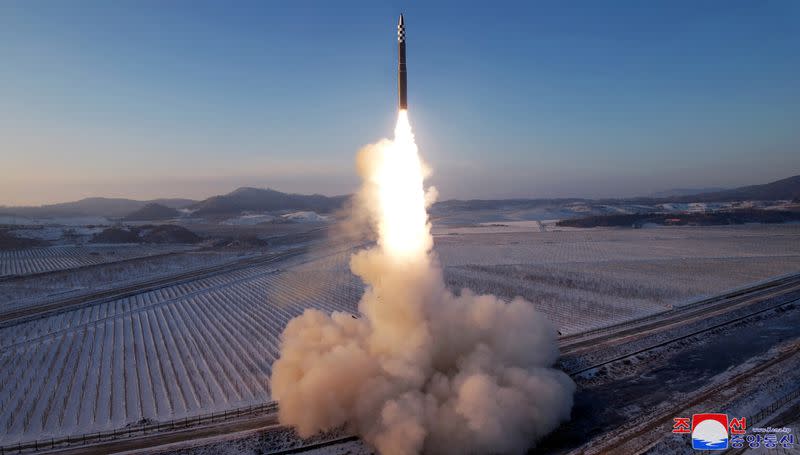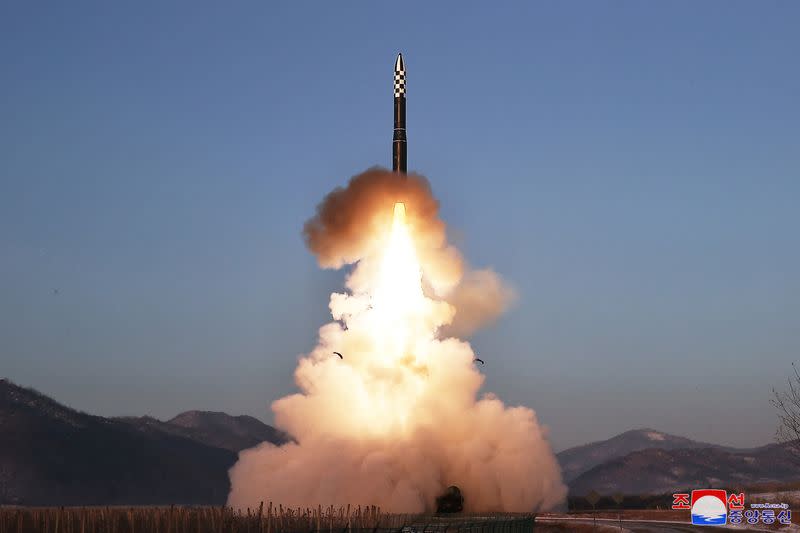North Korea says Hwasong-18 ICBM test was response to US hostility
- Oops!Something went wrong.Please try again later.
By Jack Kim
SEOUL (Reuters) - North Korea said on Tuesday it had tested the isolated state's newest ICBM on Monday to gauge the war readiness of its nuclear force against mounting U.S. hostility, as Washington and its allies began operating a real-time missile data sharing system.
North Korean state media said leader Kim Jong Un watched Monday's launch of the Hwasong-18 intercontinental ballistic missile (ICBM) at a site east of the capital, Pyongyang. The missile reached an altitude of 6,518 km (4,050 miles), flying 1,002 km and accurately hitting the intended target, an empty patch of sea, state media said.
Kim said the launch sends "a clear signal to the hostile forces, who have fanned up their reckless military confrontation hysteria" against the North, state news agency KCNA reported.
Kim said the drill "displayed the DPRK's will for toughest counteraction and its overwhelming strength". DPRK is short for the Democratic People's Republic of Korea.
He presented "some new important tasks for accelerating the development of the DPRK's nuclear strategic forces", KCNA said, without elaborating.
South Korea and Japan said that based on Monday's flight data, the North had fired an ICBM with the range to hit anywhere in the United States. The launch was condemned by South Korea, Japan and the United States as a flagrant violation of U.N. Security Council resolutions.
On the same day, China, a Security Council permanent member that has previously approved sanctions against Pyongyang, held a high-level meeting with North Korea in Beijing, discussing cooperation and issues of "common concern" in "a friendly atmosphere," the countries' state media said.
The U.N. Security Council is due to meet on Tuesday at the request of the United States and other countries to discuss the launch.
South Korean President Yoon Suk Yeol, who has taken a hard line against Pyongyang since taking office last year, said Kim Jong Un's regime "will come to realise provocative actions will only bring greater pain to itself".
MISSILE DETECTION SYSTEM
In a joint announcement on Tuesday, South Korea, Japan and the United States said they had activated a system to detect and assess North Korea's missile launches in real-time and established a multi-year trilateral military exercise plan.
Separately, national security officials of the three countries held a video conference about curbing North Korea's illicit cyber activities, which may be channelling funds to its weapons programs, Yoon's office said.
On Sunday, the North condemned a U.S. military show of force, including the arrival of an aircraft carrier and nuclear-powered submarine in South Korea, as "war" moves, and fired a short-range ballistic missile into the sea off its east coast.
South Korea said Monday's missile launch was a solid-fuel Hwasong-18. It flew in a sharply lofted trajectory and landed in the sea west of Japan's Hokkaido island.
North Korea's state media published what it said were photographs of the launch, showing the missile blasting off from a snow-covered field trailing a plume of smoke.
North Korea's description of a "launching drill" was its first such characterisation for an ICBM and showed it went beyond developmental testing to assess counteraction capabilities, Jenny Town, director of the Washington-based 38 North project, said on X.
The ICBM's lofted trajectory and 74-minute flight time are compatible with an operational range of up to 15,000 km (9,300 miles) if launched at a flatter, standard trajectory, which puts all of the mainland United States within reach, Japanese defence officials said.
North Korea also criticised a high-level meeting between U.S. and South Korean officials last week where upgraded responses to nuclear threats and joint military drills were discussed.
The United States continued to demonstrate a confrontational attitude by bringing in nuclear-powered submarines, strategic bombers and an aircraft carrier near the Korean peninsula, it said.
The U.S. nuclear-powered attack submarine USS Missouri arrived in the South Korean port of Busan on Sunday, the latest U.S. strategic military asset to be deployed as part of Washington's pact with Seoul to boost defence readiness.
The United States and South Korea have increased the intensity of joint military drills against threats from the North, which has tested a range of ballistic missiles and in November launched its first military spy satellite.
(Reporting by Jack Kim, Josh Smith, Soo-hyang Choi in Seoul, Phil Stewart in Washington; Editing by Stephen Coates, Ed Davies and Gerry Doyle)




